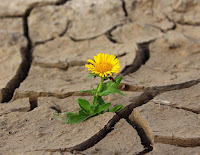Why is there less rainfall in Catalonia and what does it mean for the region
In Catalonia, a region in northeastern Spain , a decrease in precipitation is observed. This has a significant impact on the region, leading to droughts, water shortages and agricultural problems.
What are the reasons for the decrease in precipitation?
There are a number of factors contributing to the decrease in rainfall in Catalonia. They include:
Climate Change: Climate change is causing the Earth's climate to change, leading to changes in rainfall patterns around the world. Catalonia is no exception, and the region is experiencing less rainfall as a result of climate change.
Natural variability: Rainfall patterns naturally vary from year to year, and in the past there have been periods of below average rainfall in Catalonia. However, the current decrease in precipitation is more severe and long-lasting than anything seen before.
Land use changes: Land use changes such as deforestation and urbanization can also affect rainfall patterns. For example, trees release water vapor into the atmosphere, which contributes to the formation of clouds and rain. When trees are removed, there is less water vapor in the atmosphere, which can lead to less precipitation.
What are the consequences of reduced rainfall?
The decrease in rainfall has a number of negative consequences for Catalonia. They include:
Droughts: Catalonia is now experiencing droughts more frequently and more severely than ever before. This puts a strain on water resources and leads to water shortages in some areas.
Agricultural challenges: Farmers find it difficult to grow crops in arid conditions. This leads to lower yields and higher food prices.
Wildfires: Drier conditions also make it easier for wildfires to start and spread. It is a big threat to forests and property.
What can be done to reduce precipitation?
There are several things that can be done to address the problem of falling rainfall in Catalonia. They include:
Reduction of greenhouse gas emissions. The most important thing that can be done to solve the problem of climate change is to reduce greenhouse gas emissions. This will help slow the warming of the planet and reduce the impact of climate change on precipitation patterns.
Improving water conservation. Water conservation measures, such as using water-efficient appliances and fixing leaky faucets, can help reduce water demand and make water supplies more sustainable.
Investments in water infrastructure. Investments in water infrastructure, such as building new reservoirs and desalination plants, can help increase water supplies and make the region more drought-resistant.
Supporting sustainable agriculture: Supporting sustainable agricultural practices, such as the use of drought-tolerant crops and drip irrigation, can help farmers grow crops more efficiently in arid conditions.
The future with precipitation in Catalonia
The future of rainfall in Catalonia is uncertain. However, it is likely that the region will continue to experience less rainfall as a result of climate change. This will have a significant impact on the region and it will be important to take measures to adapt to climate change.
"The reduction of precipitation in Catalonia is a serious problem with a significant impact on the region," said Dr Josep Peñuelas, climatologist at the Center for Environmental Research and Applications in Forestry (CREAF). "It is important to take action to address this issue and adapt to climate change."
"Conserving water is essential for the future of Catalonia," said Ms. Teresa Jorda, Minister of Climate for the Government of Catalonia. "We must use water more wisely and invest in water infrastructure to ensure we have enough water for our needs."
"Farmers must adapt their practices to drier conditions," said Mr. Pere Roca, president of the Farmers' Union of Catalonia (Unió de Pagesos). "This includes using drought-tolerant crops and irrigation systems that use less water."
The reduction of rainfall in Catalonia is a complex problem with no easy solutions. However, by taking steps to reduce greenhouse gas emissions, conserve water




Comments
Post a Comment